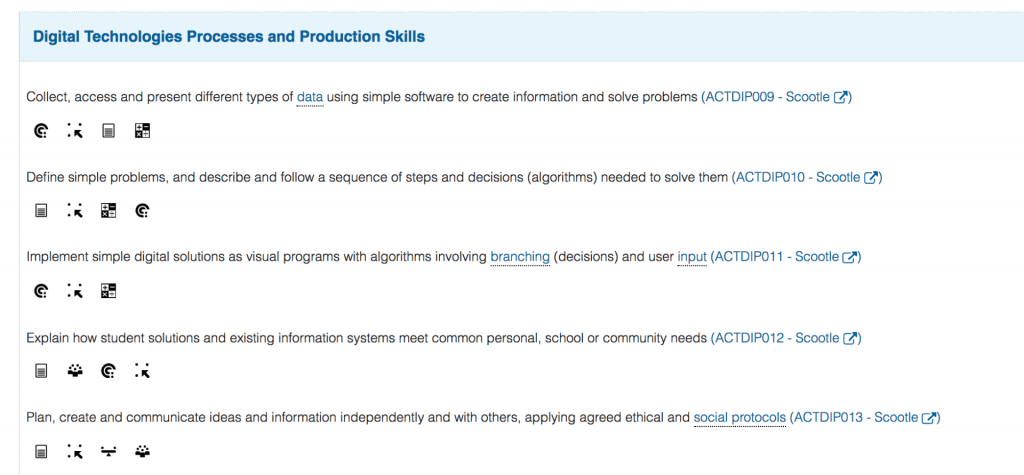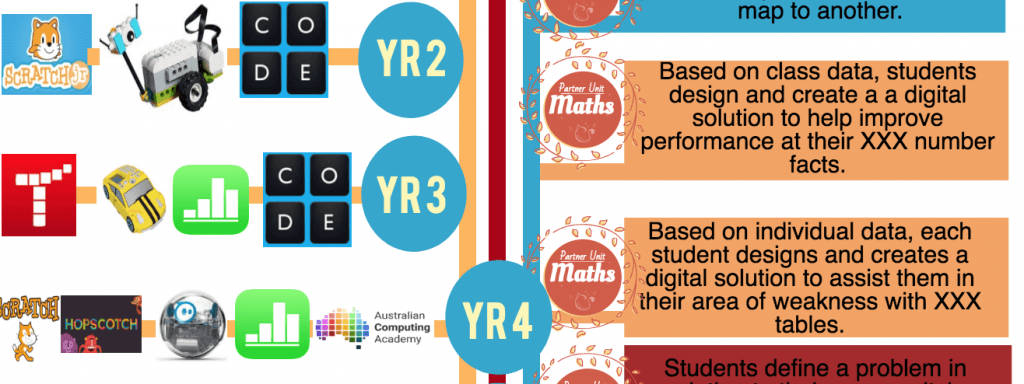At the heart of the Digital Technologies Curriculum is the creation of digital solutions. It’s an extremely empowering curriculum with students building skills right from the Early Years that enable them to become data analysers, system architects, computational thinkers and solution designers.
Within the Year 3-4 Band for Digital Technologies, students need to have opportunities to create a range of digital solutions such as interactive adventures that involve user choice, modelling simplified real world systems and simple guessing games. The appropriate content descriptions that support the processes to be shown are below:

As each year passes of a school’s implementation, students are developing an increasingly broader range of skills and understandings related to the Digital Technologies Curriculum, and this present exciting opportunities and some challenges for schools. In meeting these challenges and seizing these opportunities, schools need to strategically adjust their programs to cater for the ever-evolving nature of the needs and capabilities each year.
One example, for us, is within our Yr 3/4 band with our past Digital Solutions having been based on the creation of digital solutions to support problems identified with tables knowledge:

We have found that within yr 3 (rather than by Yr 4), the students are now able to identify individual areas of weakness in their number facts using effective data collection methods and are also able to easily incorporate branching in their algorithms because of the nature of the digital solution. We knew we needed to increase the expectations for 2019, to take advantage of both the formally taught curriculum at our school but also those that were being picked up by students in our extra-curricular program, The Young Innovator Program.
The incorporation of a physical computing element is one opportunity for us within this band. Microbit is a tool that can be incorporated within this band to provide a broader scope of opportunities for these students. The fact that the microbit is an actual physical tool broadens the scope of experiences, bringing with it the potential for a range of digital solutions for authentic problems to be developed. It’s a tiny bit of equipment, immensely affordable with numerous add-ons including sensors and outputs.
Getting started:
From your computer via micro USB
Using the app on your iPad and the Microbit via USB
An example of a digital solution using microbit to enable students to reinforce skills with their multiplication tables:

